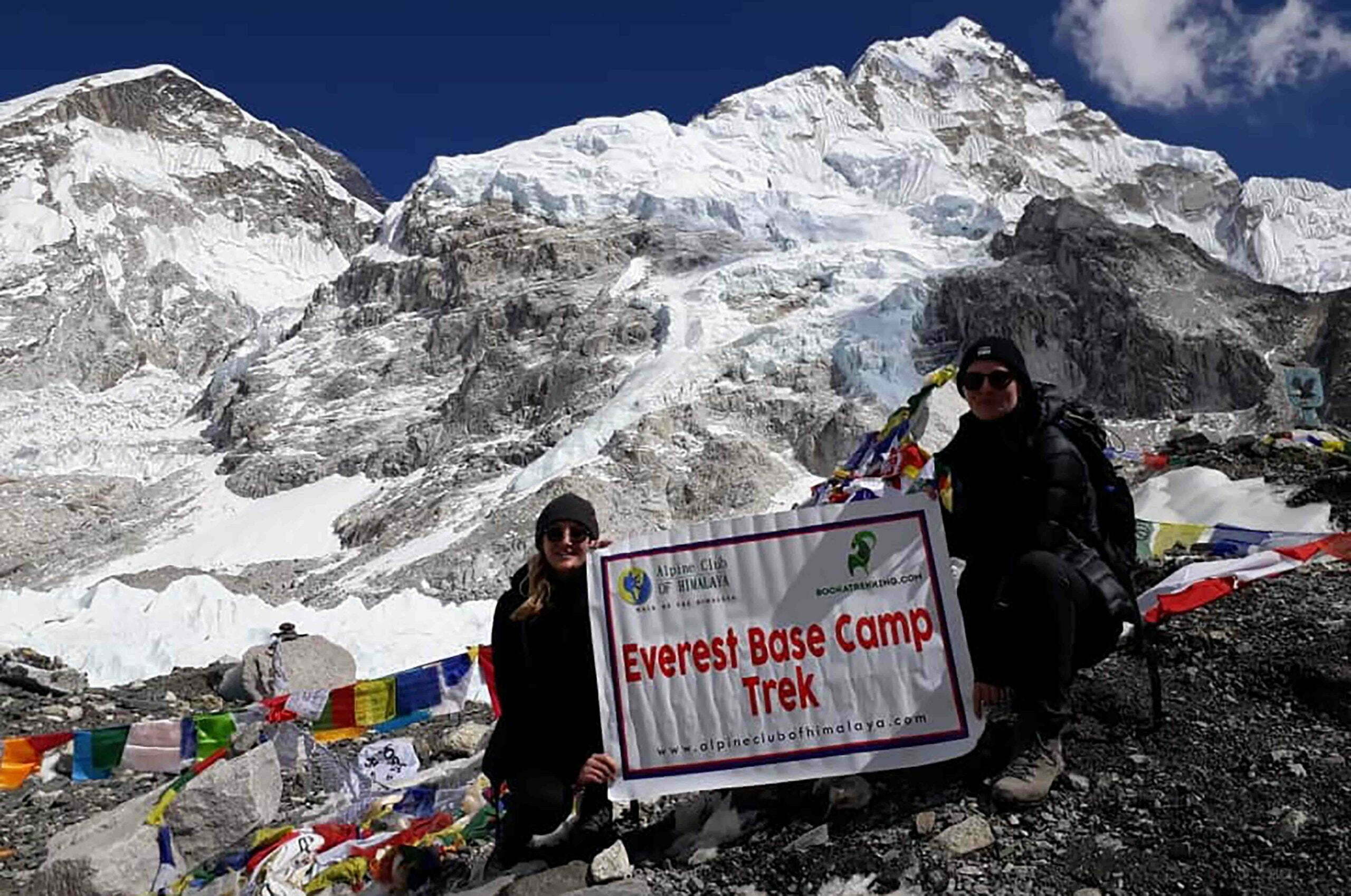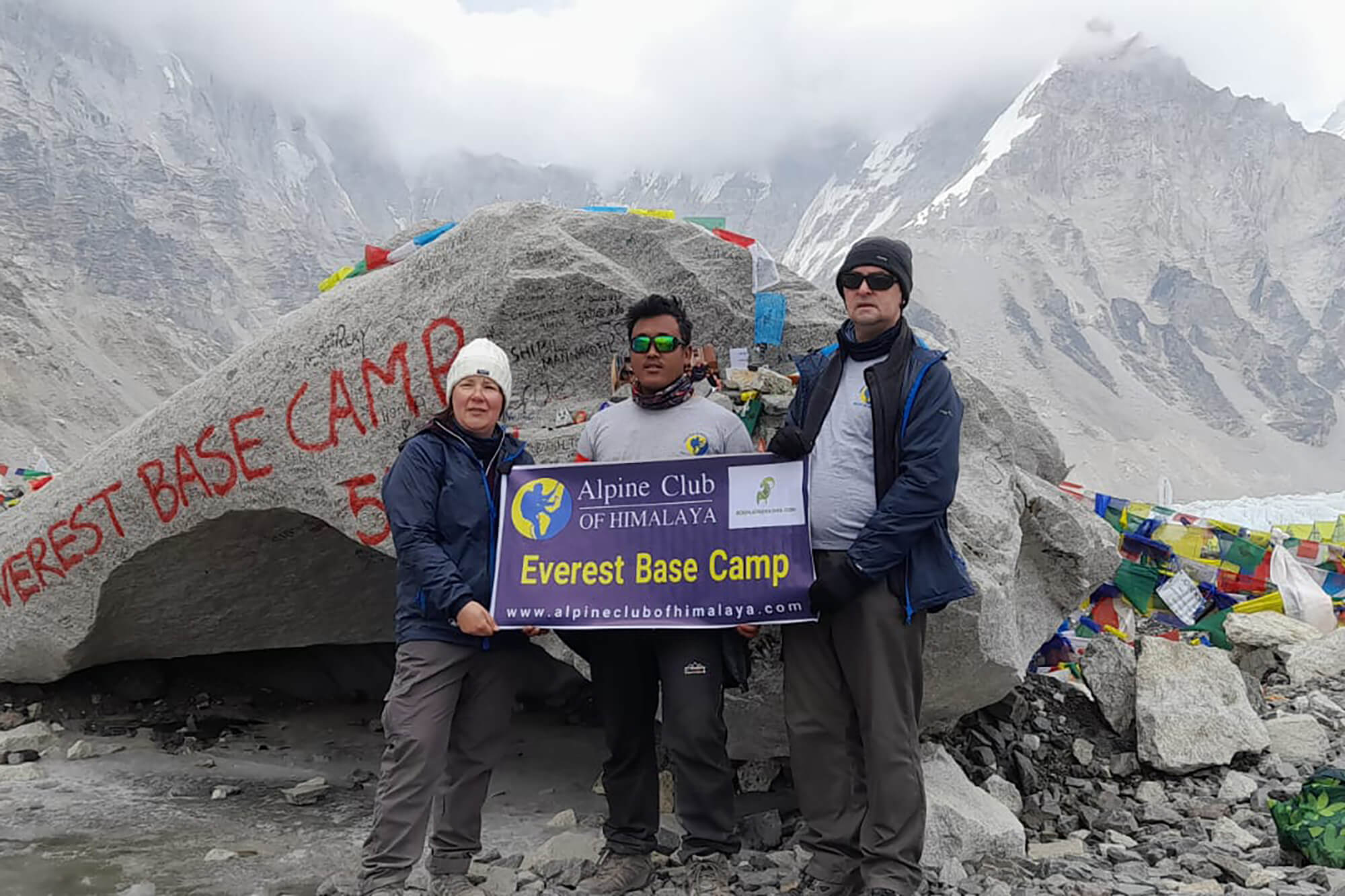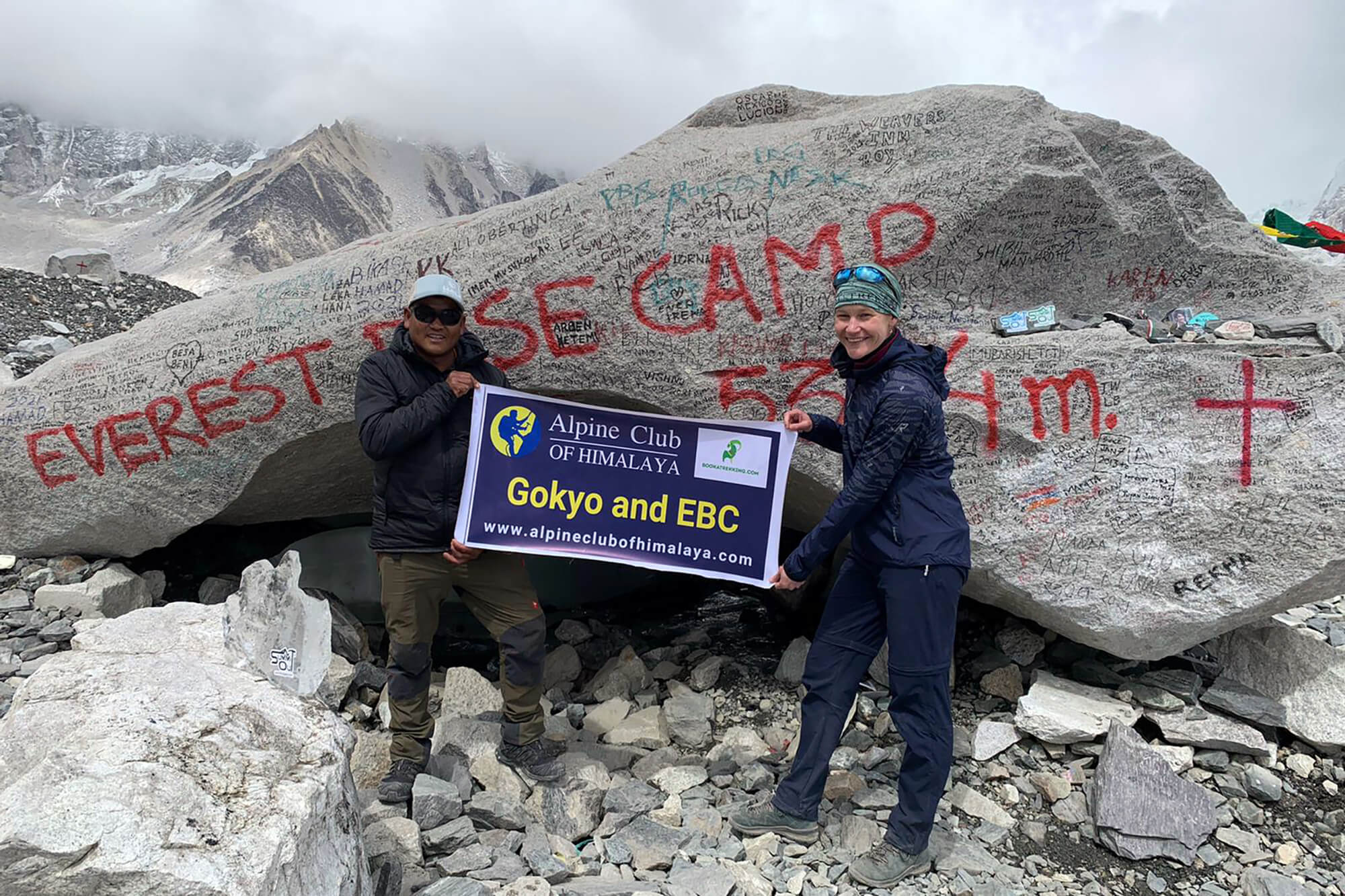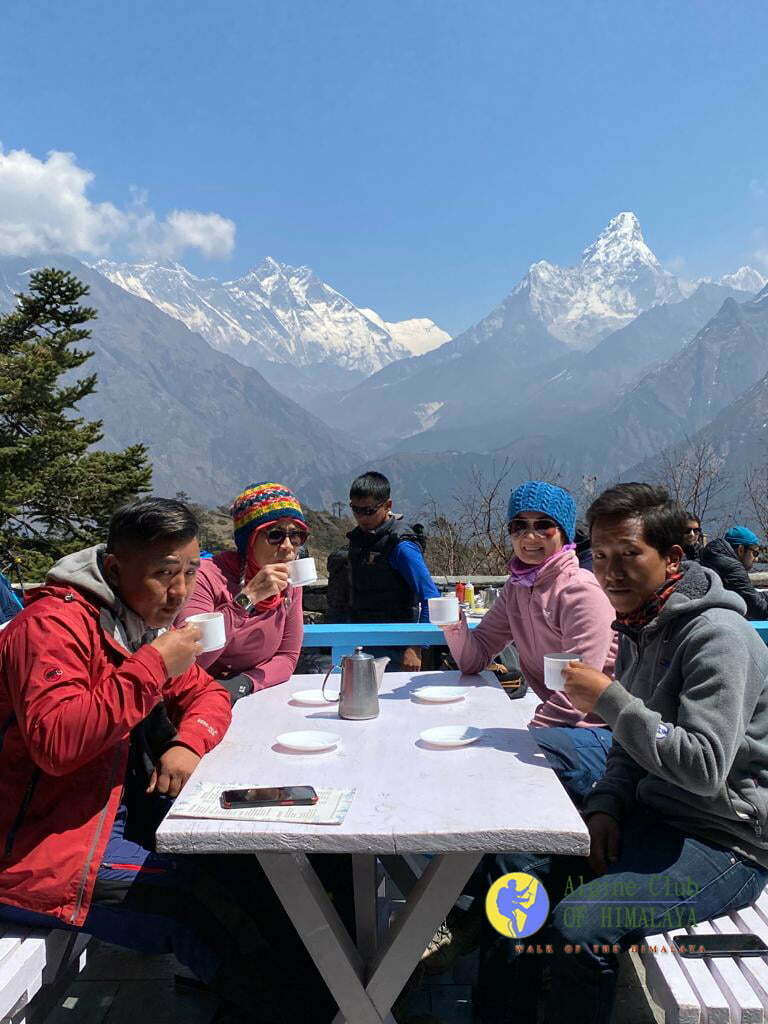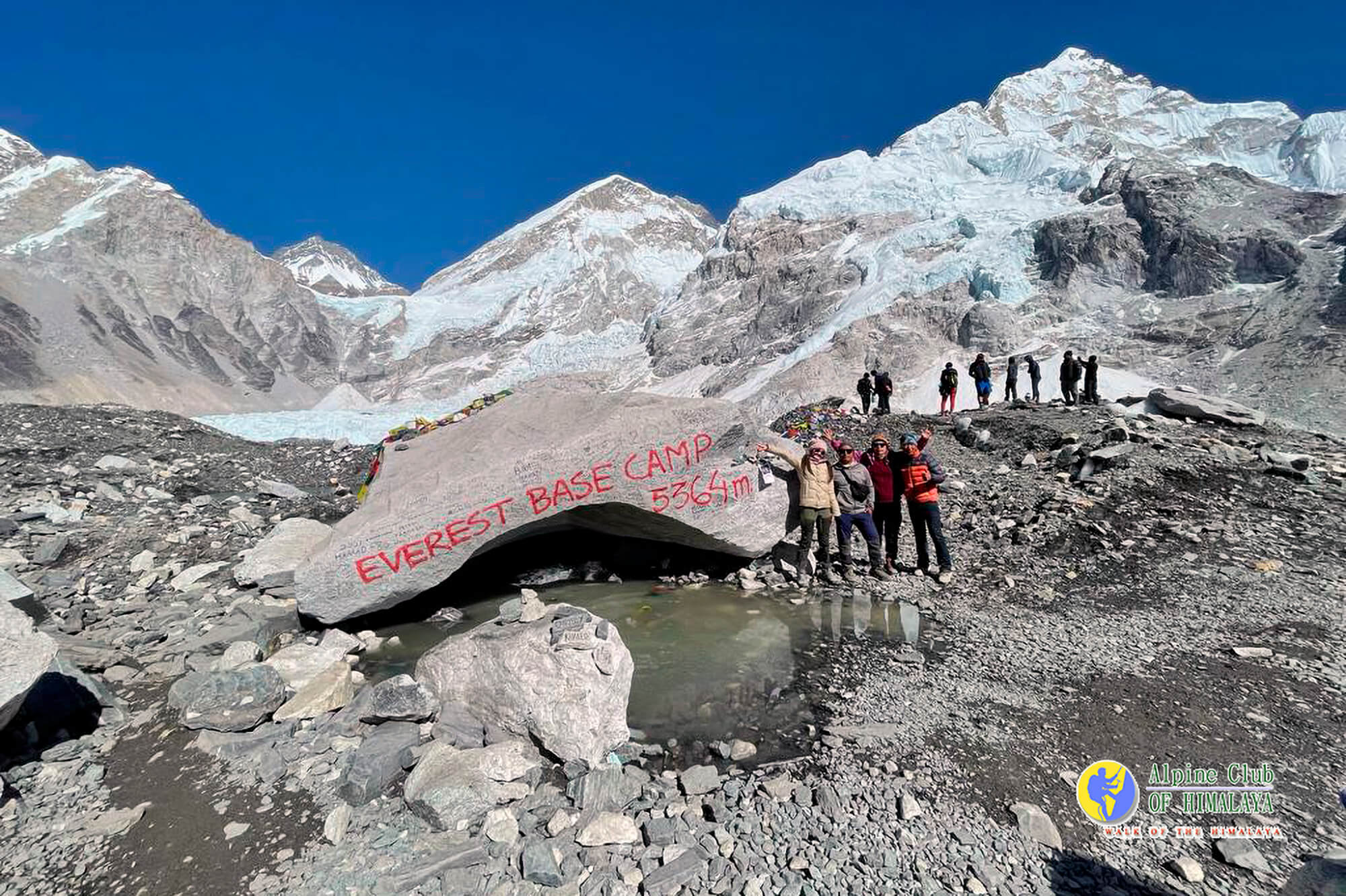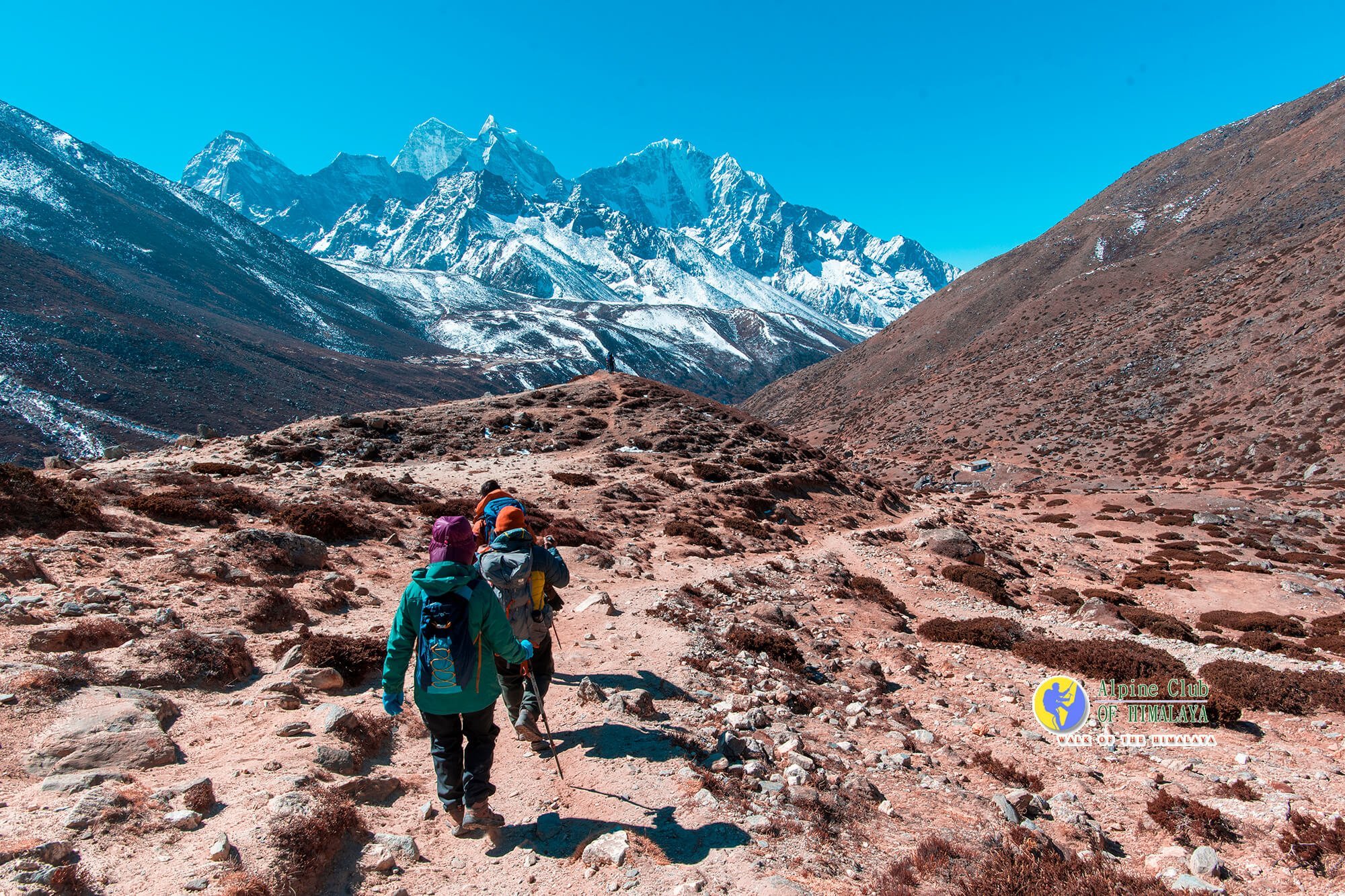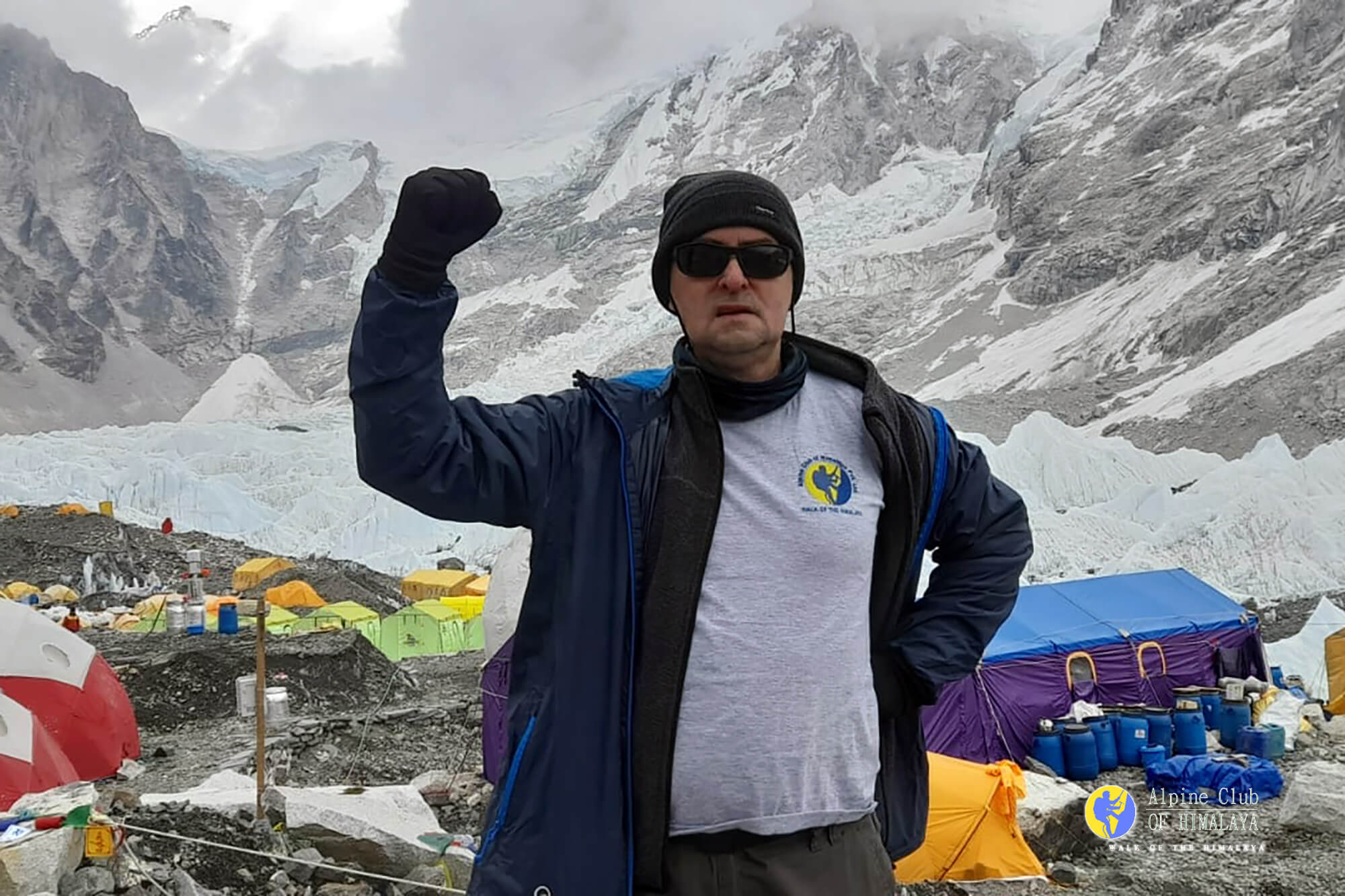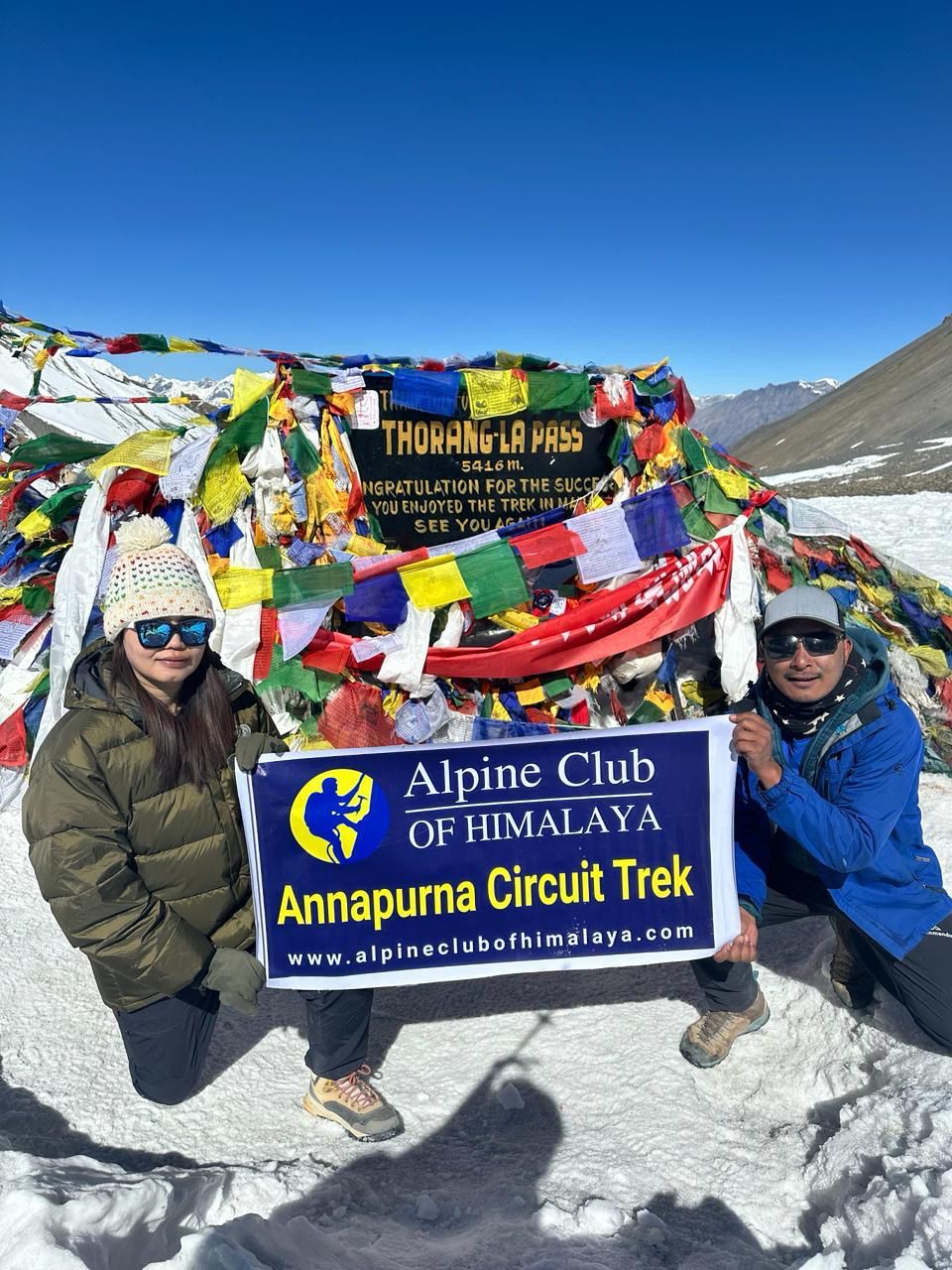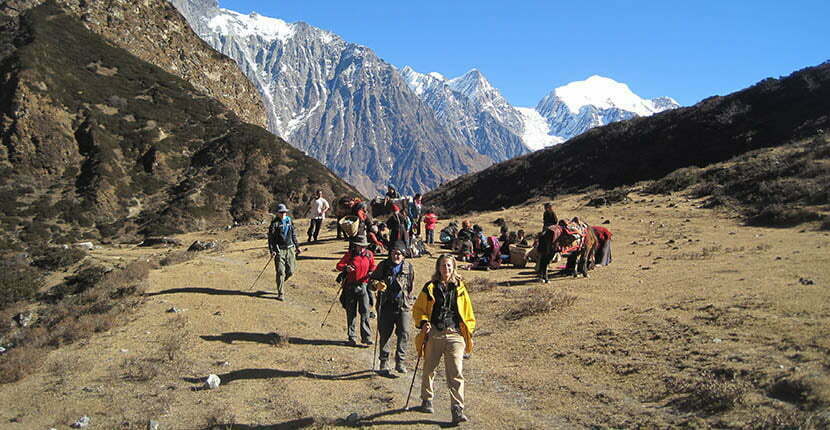Everest Base Camp Luxury Lodge Trek offered by The Alpine Club of Himalaya provides a unique way to experience the majesty of the Everest region. This trek caters to those who desire the thrill of conquering Everest Base Camp (EBC) while enjoying the comfort and amenities of luxury lodges along the way.
Trekking in Comfort: Luxury Lodges
The defining feature of this trek is the accommodation. Unlike traditional teahouses, you’ll be spending your nights in luxury lodges. These well-appointed facilities offer a welcome respite after a day on the trail. Imagine sinking into a comfortable bed, enjoying a warm shower, and savoring delicious meals prepared with fresh ingredients – a far cry from the basic amenities of typical guesthouses.
Following the Footsteps of Legends
The Everest Base Camp trek itself is a classic Himalayan adventure. You’ll retrace the historic path taken by Sir Edmund Hillary and Tenzing Norgay Sherpa on their groundbreaking summit of Everest in 1953. The trek begins in Lukla, a small mountain town often referred to as the “Gateway to Everest.” From Lukla, you’ll embark on a journey that takes you through diverse landscapes, each offering its own unique charm.
A Tapestry of Landscapes
The trail winds its way through dense rhododendron forests teeming with colorful birds. As you ascend, the landscape gradually transforms into a breathtaking display of high-altitude terrain. You’ll encounter Sherpa villages, each with its own distinct culture and traditions. The air will grow thinner, and the majestic peaks of the Khumbu Valley will begin to dominate the horizon.
Sherpa Culture and Ancient Monasteries
Immerse yourself in the rich tapestry of Sherpa culture. Visit ancient monasteries like Tengboche Monastery, perched on a scenic hilltop overlooking the valley. These monasteries are not only places of religious significance but also serve as social hubs for the local communities. Witness the vibrant prayer flags fluttering in the wind, carrying the hopes and aspirations of the Sherpa people.
The Thrill of the Climb: EBC and Kala Patthar
The trek culminates at Everest Base Camp (EBC) – a bustling hub for climbers preparing to summit Everest. Standing at an elevation of 5,364 meters (17,594 feet), EBC offers a panoramic view of the surrounding peaks, including the mighty Everest itself. From here, you can witness the determination and courage of mountaineers as they embark on their expeditions.
Reaching for the Highest Point: Kala Patthar
For an even more spectacular view, consider pushing yourself further to Kala Patthar, situated at 5,545 meters (18,219 feet). This challenging climb rewards you with the title of reaching the highest point of the trek. From Kala Patthar, witness a breathtaking sunrise paint the surrounding peaks with a golden hue. Imagine standing amidst the world’s highest mountains, a humbling and awe-inspiring experience.
Challenges and Considerations
While the luxury lodges provide comfort, the Everest Base Camp trek remains a challenging journey. The high altitude presents very real challenges like altitude sickness. Proper acclimatization is crucial, as is maintaining a good physical fitness level prior to embarking on the trek.
Who is this Trek For?
This trek is ideal for those who seek a unique blend of adventure and comfort. It caters to those who appreciate the beauty of the Himalayas but prefer not to compromise on creature comforts. While a good level of physical fitness is required, the luxury lodges make this trek accessible to a wider range of trekkers compared to the traditional teahouse experience.
Everest Base Camp Luxury Lodge Trek: A Once-in-a-Lifetime Experience
The Everest Base Camp Luxury Lodge Trek offers an unforgettable opportunity to experience the magic of the Everest region. Witness the awe-inspiring beauty of the Himalayas, delve into the rich Sherpa culture, and conquer the challenge of reaching Everest Base Camp – all while enjoying the comfort of luxury lodges. This trek is a perfect option for those seeking an extraordinary adventure with a touch of indulgence.
Experience Everest in Style
The Everest Base Camp Luxury Lodge Trek offered by The Alpine Club of Himalaya provides a unique way to experience the majesty of the Everest region. This trek caters to those who desire the thrill of conquering Everest Base Camp (EBC) while enjoying the comfort and amenities of luxury lodges along the way.
Trekking in Comfort: Luxury Lodges
The defining feature of this trek is the accommodation. Unlike traditional teahouses, you’ll be spending your nights in luxury lodges. These well-appointed facilities offer a welcome respite after a day on the trail. Imagine sinking into a comfortable bed, enjoying a warm shower, and savoring delicious meals prepared with fresh ingredients – a far cry from the basic amenities of typical guesthouses.
Following the Footsteps of Legends
The Everest Base Camp trek itself is a classic Himalayan adventure. You’ll retrace the historic path taken by Sir Edmund Hillary and Tenzing Norgay Sherpa on their groundbreaking summit of Everest in 1953. The trek begins in Lukla, a small mountain town often referred to as the “Gateway to Everest.” From Lukla, you’ll embark on a journey that takes you through diverse landscapes, each offering its own unique charm.
A Tapestry of Landscapes
The trail winds its way through dense rhododendron forests teeming with colorful birds. As you ascend, the landscape gradually transforms into a breathtaking display of high-altitude terrain. You’ll encounter Sherpa villages, each with its own distinct culture and traditions. The air will grow thinner, and the majestic peaks of the Khumbu Valley will begin to dominate the horizon.
Sherpa Culture and Ancient Monasteries
Immerse yourself in the rich tapestry of Sherpa culture. Visit ancient monasteries like Tengboche Monastery, perched on a scenic hilltop overlooking the valley. These monasteries are not only places of religious significance but also serve as social hubs for the local communities. Witness the vibrant prayer flags fluttering in the wind, carrying the hopes and aspirations of the Sherpa people.
The Thrill of the Climb: EBC and Kala Patthar
The trek culminates at Everest Base Camp (EBC) – a bustling hub for climbers preparing to summit Everest. Standing at an elevation of 5,364 meters (17,594 feet), EBC offers a panoramic view of the surrounding peaks, including the mighty Everest itself. From here, you can witness the determination and courage of mountaineers as they embark on their expeditions.
Reaching for the Highest Point: Kala Patthar
For an even more spectacular view, consider pushing yourself further to Kala Patthar, situated at 5,545 meters (18,219 feet). This challenging climb rewards you with the title of reaching the highest point of the trek. From Kala Patthar, witness a breathtaking sunrise paint the surrounding peaks with a golden hue. Imagine standing amidst the world’s highest mountains, a humbling and awe-inspiring experience.
Challenges and Considerations
While the luxury lodges provide comfort, the Everest Base Camp trek remains a challenging journey. The high altitude presents very real challenges like altitude sickness. Proper acclimatization is crucial, as is maintaining a good physical fitness level prior to embarking on the trek.
Who is this Trek For?This trek is ideal for those who seek a unique blend of adventure and comfort. It caters to those who appreciate the beauty of the Himalayas but prefer not to compromise on creature comforts. While a good level of physical fitness is required, the luxury lodges make this trek accessible to a wider range of trekkers compared to the traditional teahouse experience.
The Everest Base Camp Luxury Lodge Trek offers an unforgettable opportunity to experience the magic of the Everest region. Witness the awe-inspiring beauty of the Himalayas, delve into the rich Sherpa culture, and conquer the challenge of reaching Everest Base Camp – all while enjoying the comfort of luxury lodges. This trek is a perfect option for those seeking an extraordinary adventure with a touch of indulgence.
Important note:
Your safety is of paramount importance to us at the Alpine Club of Himalaya. We have the absolute authority to cancel the trip or change the itinerary. If necessary or when we have reason to believe your safety is at stake. Weather conditions, the health condition of a group member, natural disasters, and such, can contribute to changes in the itinerary. In these extreme situations, we kindly request that you offer your full co-operation to the trusted leader of the group appointed by the Alpine Club of Himalaya. However, we assure you that we will make every effort to keep to the above itinerary.
Itinerary
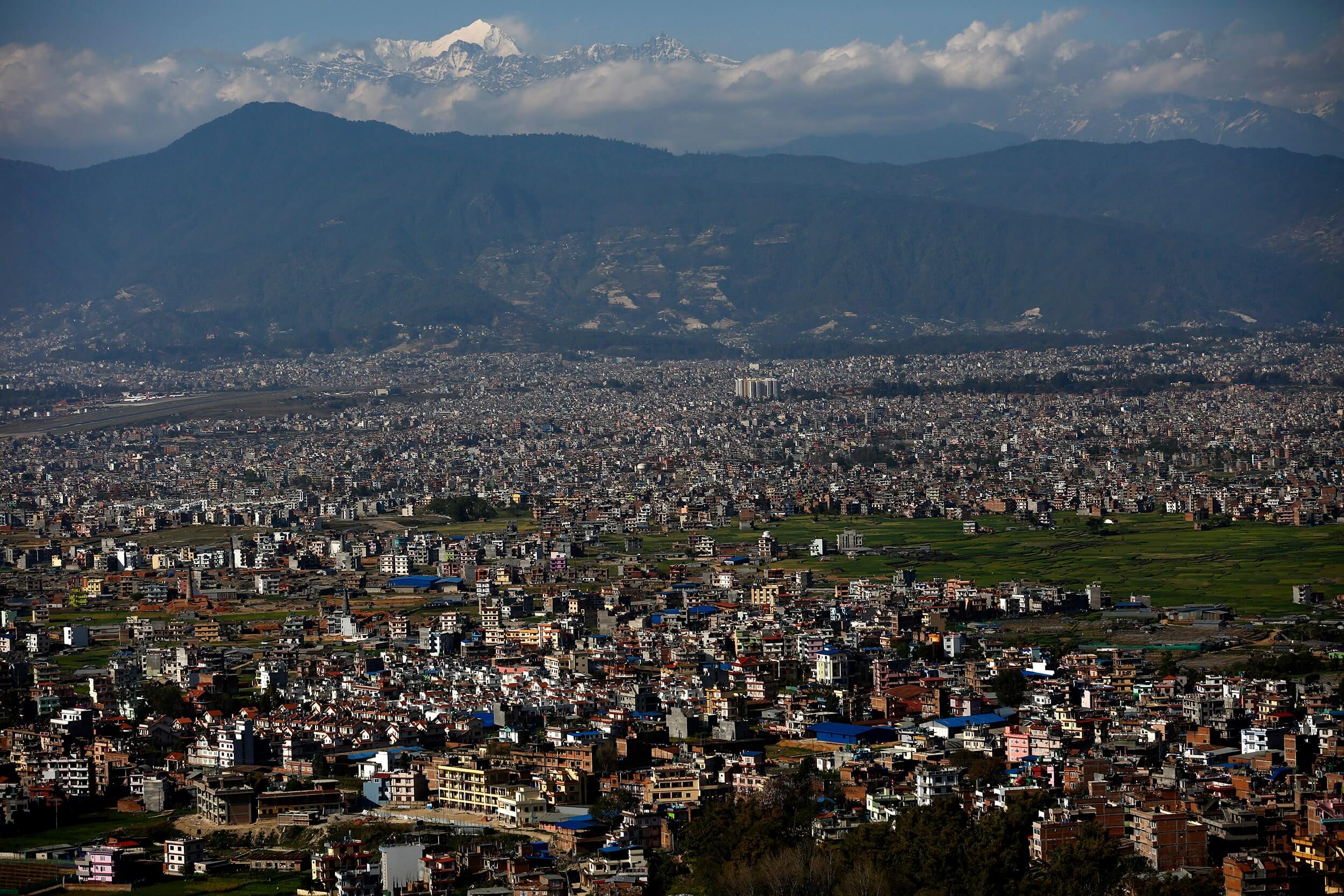 Kathmandu Valley
Kathmandu ValleyArrive at Kathmandu International Airport where you will be warmly welcomed by our representative and check in to the hotel. The rest of the day is free to explore this historic and vibrant city.
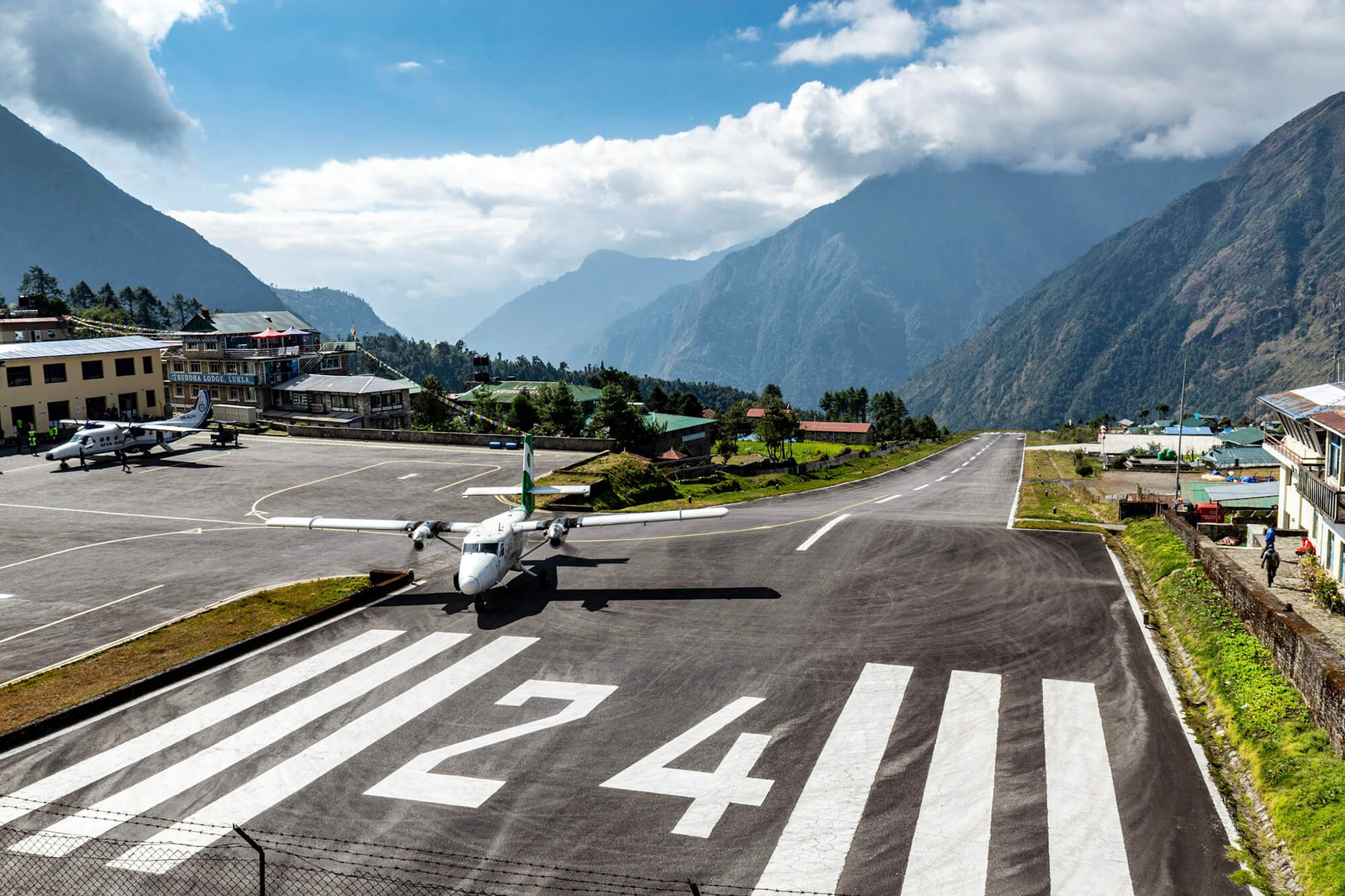 Lukla Airport
Lukla AirportEarly morning flight from Kathmandu to Lukla and trek to Phakding. Descending above farmlands we pass through Sherpa villages of Chheplung, Ghat, and Sano, and Thulo Gumela and shrines and monasteries of Drangdrak Gompa and Pema Choling Gompa with breathtaking views of sacred mountain Kumbla and sister summits Kusum Kanguru Peaks.
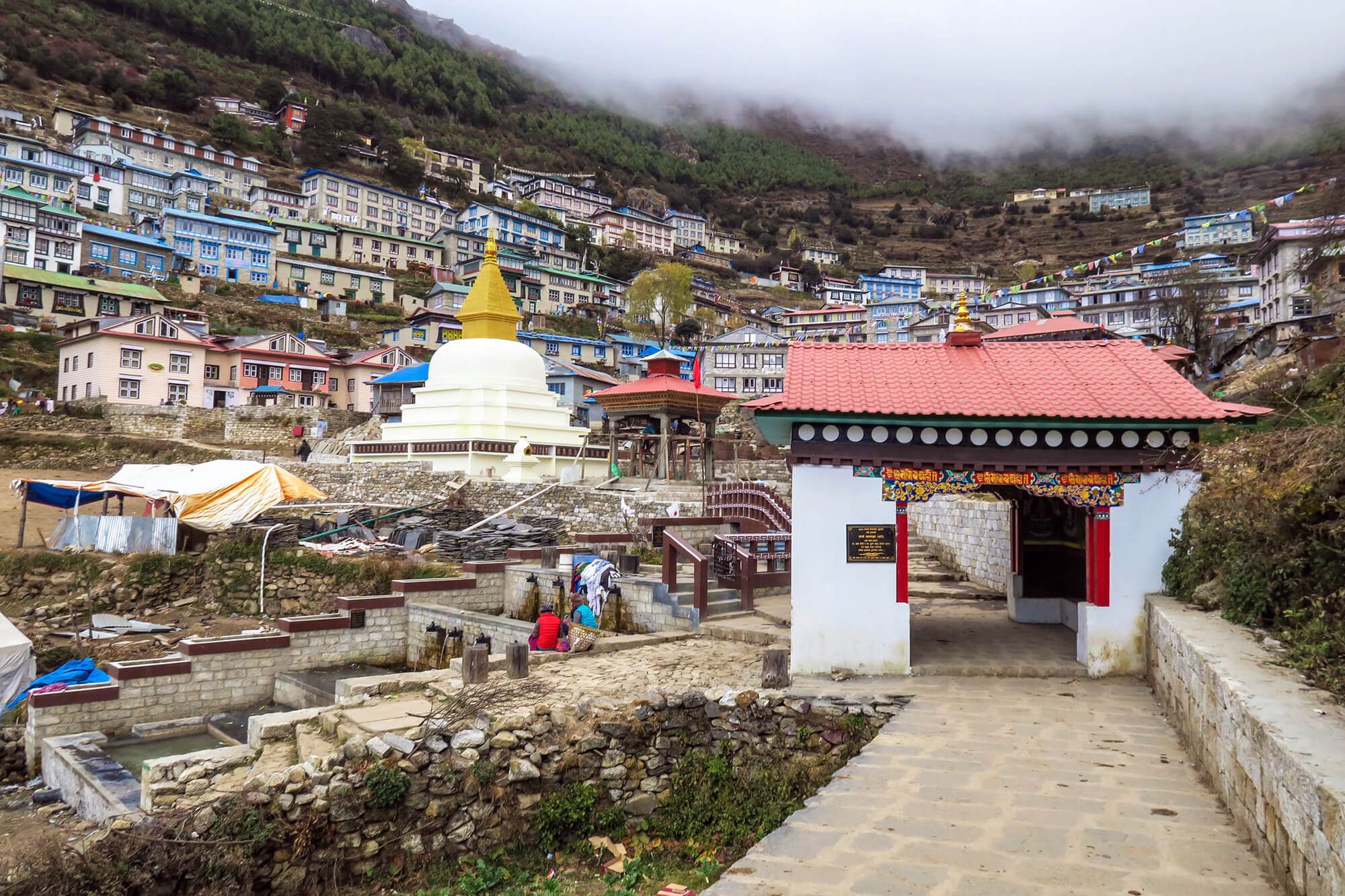 Namche Bazaar
Namche BazaarHeading for the Namche Bazaar, we cross through the hamlet of Zamphute and Tok Tok to see dazzling Thamserku glistening in the sun that stays with us for most of our trek. Passing through the scene of Sherpa Villages of Benkar, Chumoa, and Monjo, we reach Utche Choling Gompa on a bluff to the entrance of Sagarmatha National Park, a UNESCO declared World heritage site. Completing alway to Namche Bazaar, we head for the second half of the march that would like to take more time due to the steep climb at the end. Crossing through the last village of Jorsale, a steep stepped path leads us to an amazing high bridge over the Dudhkoshi River gorge, and just before this bridge the Dudhkoshi is met by its tributary, the Bhotekoshi. Beginning the final steps uphill slowly we reach the heights of Namche from where we can have our first look at Mt. Everest, peering over the Lhotse-Nuptse ridge and finally after about 1.5km/0.9mile) we reach Namche Bazaar.
 Namche Bazaar
Namche BazaarWe have an acclimatization day at Namche Bazar. To help our body better adapt to the high altitude, we can take short walks or climb a few hundred feet during the day to have a look in the villages, houses, terraced fields, and snowy mountains of Kwangde, Khumbu peak, Thamserku, Kusum Kanguru, and the village’s big weekly event, the Saturday market to have fun mingling with the crowds and watching men and women in traditional attire. This day, we start the climb through the U shaped hillside above Namche from beside the Gompa. On the way, we see several snowy peaks of Kwangde, Khumbila, and Thamserku and Tagi Tau and Pharchamo, Tip of Ama Dablam and Taboche and we reach a signposted intersection from where we move towards the right-hand for Khumjung. Walking past a large chorten and a long mani wall, we reach a viewpoint to Everest “THE EVEREST VIEW HOTEL” for lunch, Lhotse and Lhotse Shar ( East ) peak, besides Thamserku, Ama Dablam, and Taboche and then path drops to Khumjung past the Hillary School. Khumjung is famous for its gompa that stands in a grove of cedar in the upper part of the village where there is an image of the Guru Padmasambhava, who helped establish Buddhism in Tibet, flanked by his two consorts. Inside the gompa is preserved a skull that lamas believe is that of the yeti, but was disapproved by scientists in the US. We return back to Namche for a night's stay.
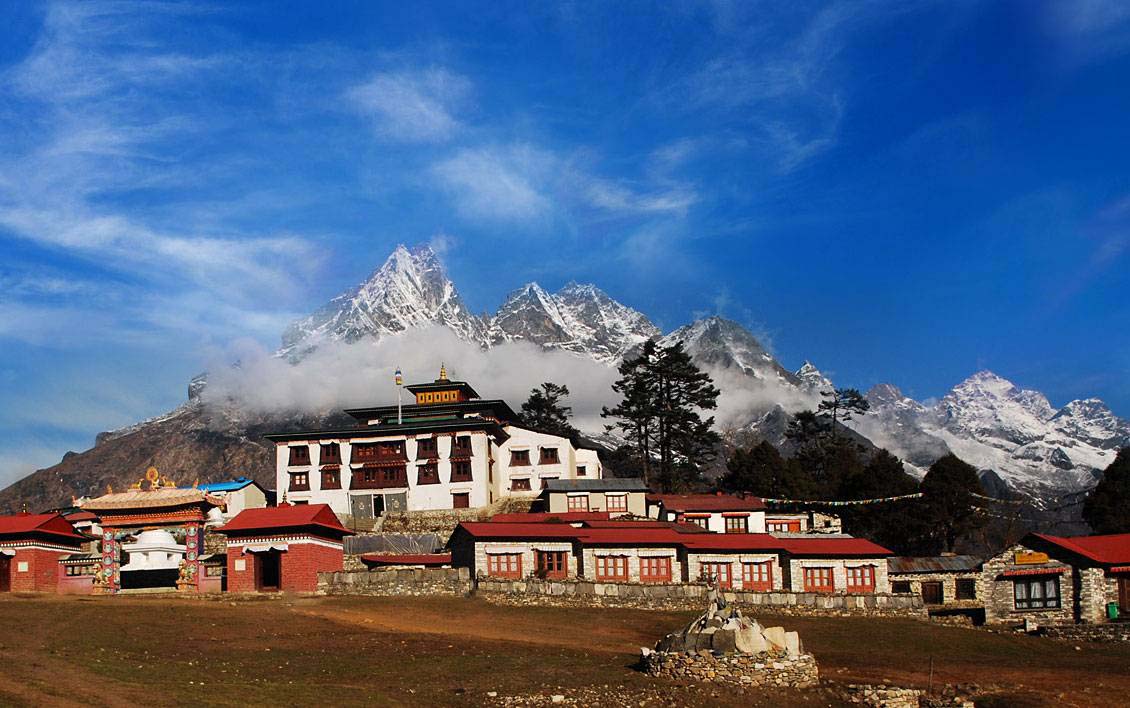 Tengboche Monastery
Tengboche MonasteryFrom Namche, we take the easy level trail that cuts around the ridge from Chhorkung to reach the end of a bluff which is a viewpoint over a grand panorama of peaks, from Thamserku to Ama Dablam, Lhotse, and Everest. From here we reach Kyangjuma (3550m) and a short walk from there takes us to an important trail junction at Sanasa (3600m) from where we take the trail to Tengboche that runs gently downhill towards the river. This trail drops gradually to Lawichasa and on our descending way, the thumb-like peak of Ama Dablam soars into view above the trail. From Lawichasa a narrow trail branches north to reach Tashinga (3380m) and now the trail drops down on steep stone steps to Phunki Thenga (3250m) and then to a bridge. From the bridge, the trail climbs past some water-powered prayer wheels and begins a sustained climb through a forest of tall, mature rhododendrons. We might see musk deer and Himalayan tahr among the trees to eventually follow the path that reaches a Kani and a pair of chortens marking the start of Tengboche village which is scattered across a wide, grassy saddle below a crescent-shaped ridge covered by scrub pines and rhododendrons. The focal point of Tengboche is the famous Tengboche monastery.
 Dingboche
DingbocheFrom Tengboche we follow the trail through a forest of conifers and rhododendrons, keeping an eye out for monal pheasants and musk deer that leads us to a village of Debuche where we visit Debuche Gompa which has some expressive old thangkas and murals painted on wooden panels. Debuche also has a small Buddhist nunnery on the east hillside. The trail continues through dense forest to reach Milinggo and then drops steeply to a suspension bridge over Imja Khola. We cross the bridge and climb the hillside opposite to a white stupa with Buddhist eyes and after a hundred yards we see a stupa that crowns an exposed bluff, mirroring the soaring tower of Ama Dablam at the end of the valley. East of the stupa is a footprint of Khumbu’s patron Saint Lama Sange Dorje. We soon reach Pangboche village that has the oldest monastery in Khumbu, Pangobche Gompa founded by Lama Sange Dorje. Following the Imja Khola the trial climbs towards the village of Shomare and crossing the treeline beyond this village we are walking up rolling arid stretch, an alpine terrain with patches of scrub and isolated pastures and fields and the yak grazing. Crossing through the yak pasture and herdsmen’s stone huts at Orsho and Tsuro Wog, we turn right where the trail descends to a point near the confluence of Imja Khola and Khumbu Khola. Finally climbing a low ridge we reach the sprawling settlement of Dingboche which is a cold and windy place with sub-zero night temperatures even in summer.
 Nangkartsang Peak
Nangkartsang PeakThere are several interesting day hikes in this area, one of which is the 400m climb to Nangkartsang Gompa on the ridge north of Dingboche. From this vintage point, there are good views of three of the world’s six highest peaks – Lhotse, Makalu, and Cho Oyu. From here we continue to the Nangkartsang summit for the close-up views of the mountains again and then return downhill to Dingboche for the night stay.
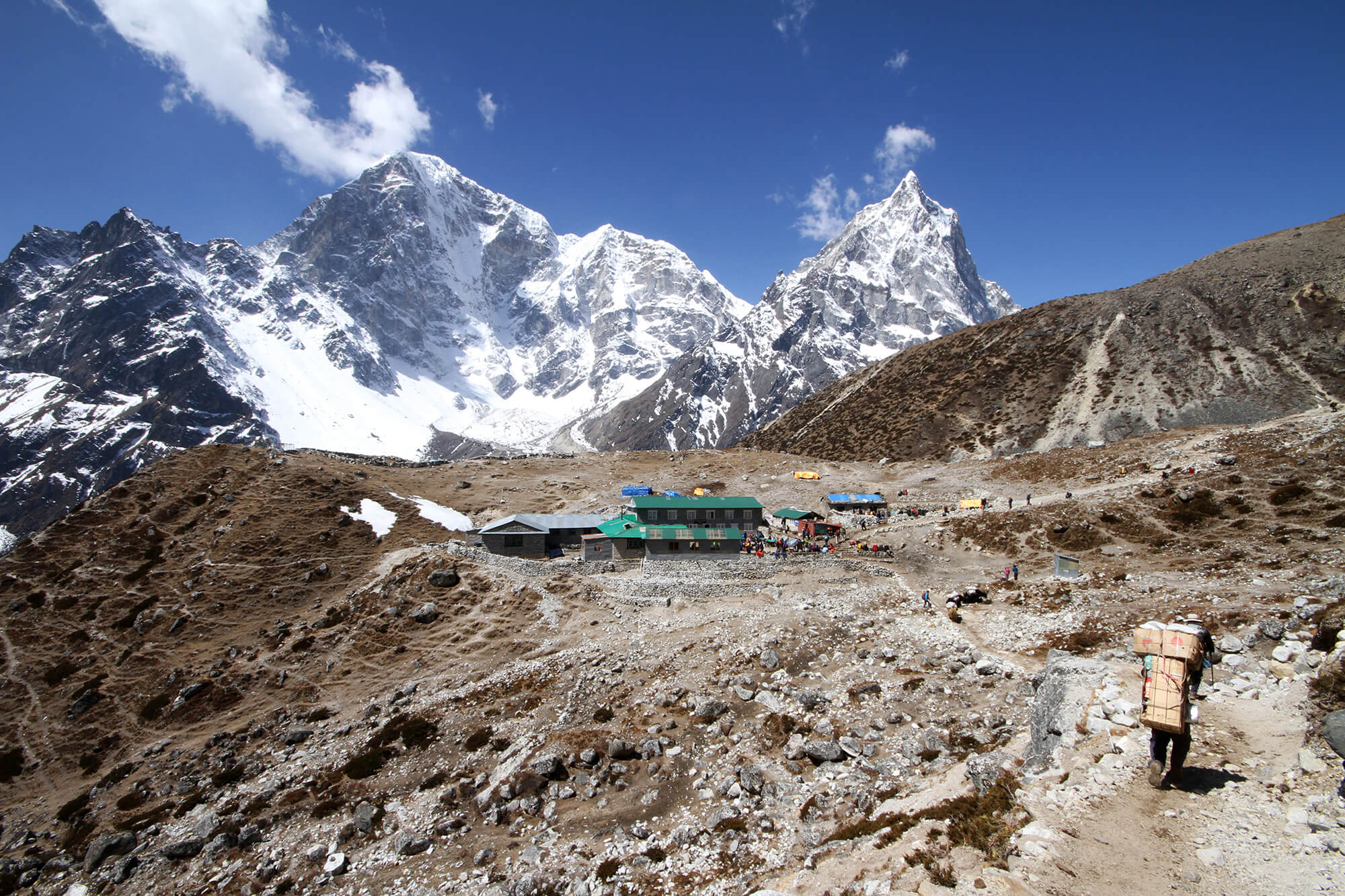 Dughla
DughlaOn this trail, we find ourselves truly in the lap of the Himalayas with awesome mountains on all sides. From Dingboche, we take the trail that climbs slowly along the ridge through the village of Dusa (4503m) where we have outstanding views of the twin peaks of Taboche and Cholatse and Ama Dablam appears as a perfect pyramid, while the summit Kantega is visible far to the left of the prominent saddle seen from Tengboche. The trail drops down to a glacial stream, rising up the other side to Dughla.
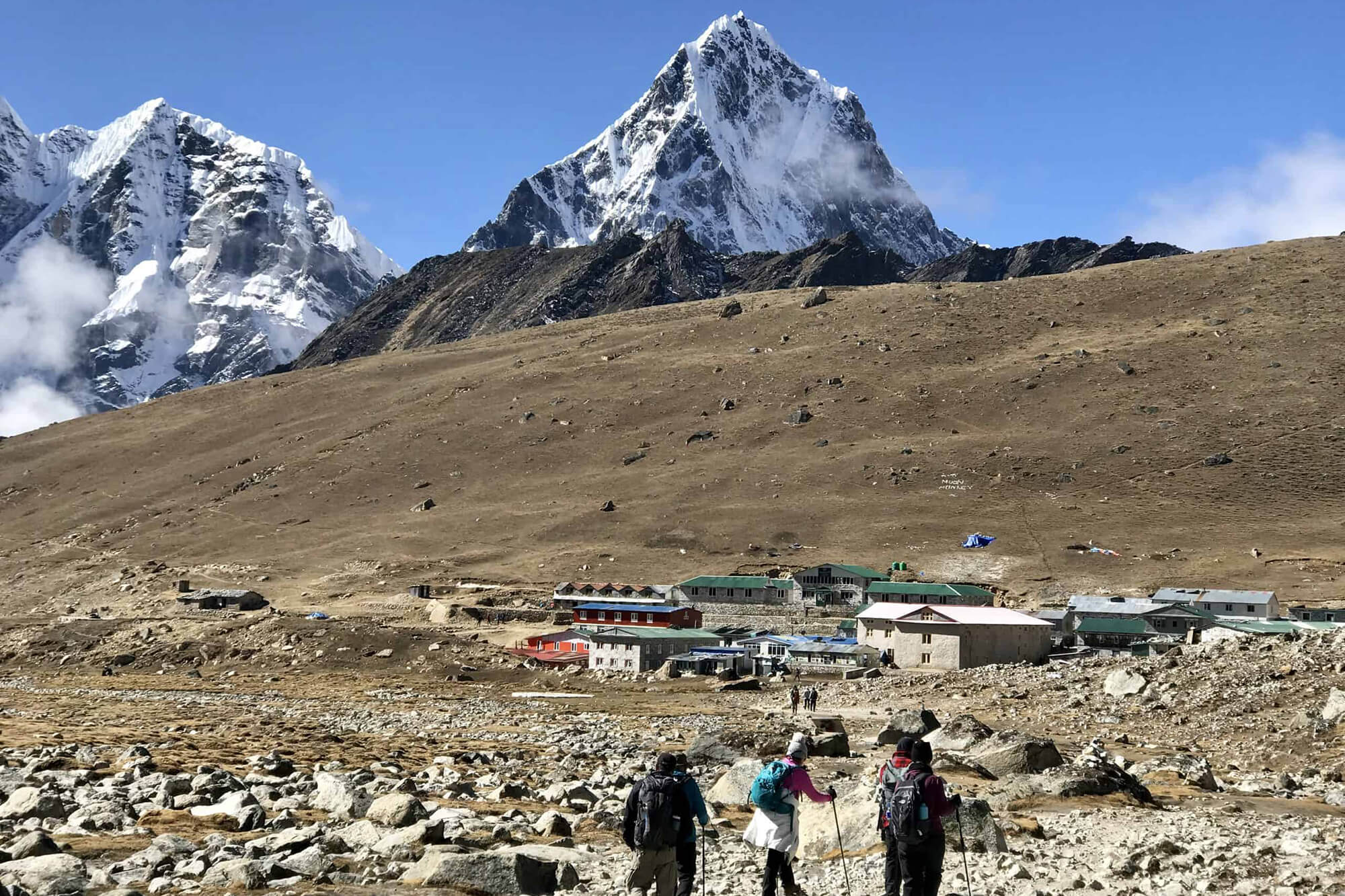 Lobuche
LobucheFrom Dughla the trail goes directly up the gravelly terminal moraine of the Khumbu Glacier and the path bears left at the top of the ridge onto Chupki Lhara where we see large heaps of stones with prayer flags remembering the mountaineers who perished on a mission to climb Mt.Everest. At the top of the valley is Chola Lake where we get a glimpse of blue waters from high trails. From Chupki Lara, the trail drops to the Khumbu glacier moraine after which we see three great peaks-Khumbutse, Lingtren, and Pumori straight in front. Now walking the final steps along a murmuring stream we reach Lobuche.
 Our guest at Everest Base Camp
Our guest at Everest Base CampThis day will be a long hard day for us. Walking by a somewhat grassy terrain and a few scattered boulders, all along we see the snowy wall of lofty mountains ahead. The 60m/200ft ascent takes us to the top of the lateral moraine wall of the Changri glacier, to a level spot called Thangma Riju from where there is a spectacular 360-degree panorama of the mountains all around-Taboche and the Lobuche peaks, Pumori, and the rest of Mahalangur Himal peaks, with Changtse in Tibet now more visible; and Nuptse filling the eastern horizon. The trail now crosses the moraine of the Changri glacier which joins the Khumbu glacier from the west and climbing steeply up a stony slope we reach Gorak Shep from where we catch our first glimpse of Kala Patthar. From Gorak Shep we move towards EBC, to be amidst mountains, not to see them from afar as EBC is not a viewpoint. Walking by the shallow blue waters of Gorak Shep Lake, the Changtse peak in Tibet and the Lho La depression can be seen straight ahead. Crossing through several of the glaciers, icefalls, frozen pools of meltwater, exposed icy walls, and large boulders we finally reach EBC from where trekking ends and mountaineering begins. We descend back to Gorak Shep for the night stay.
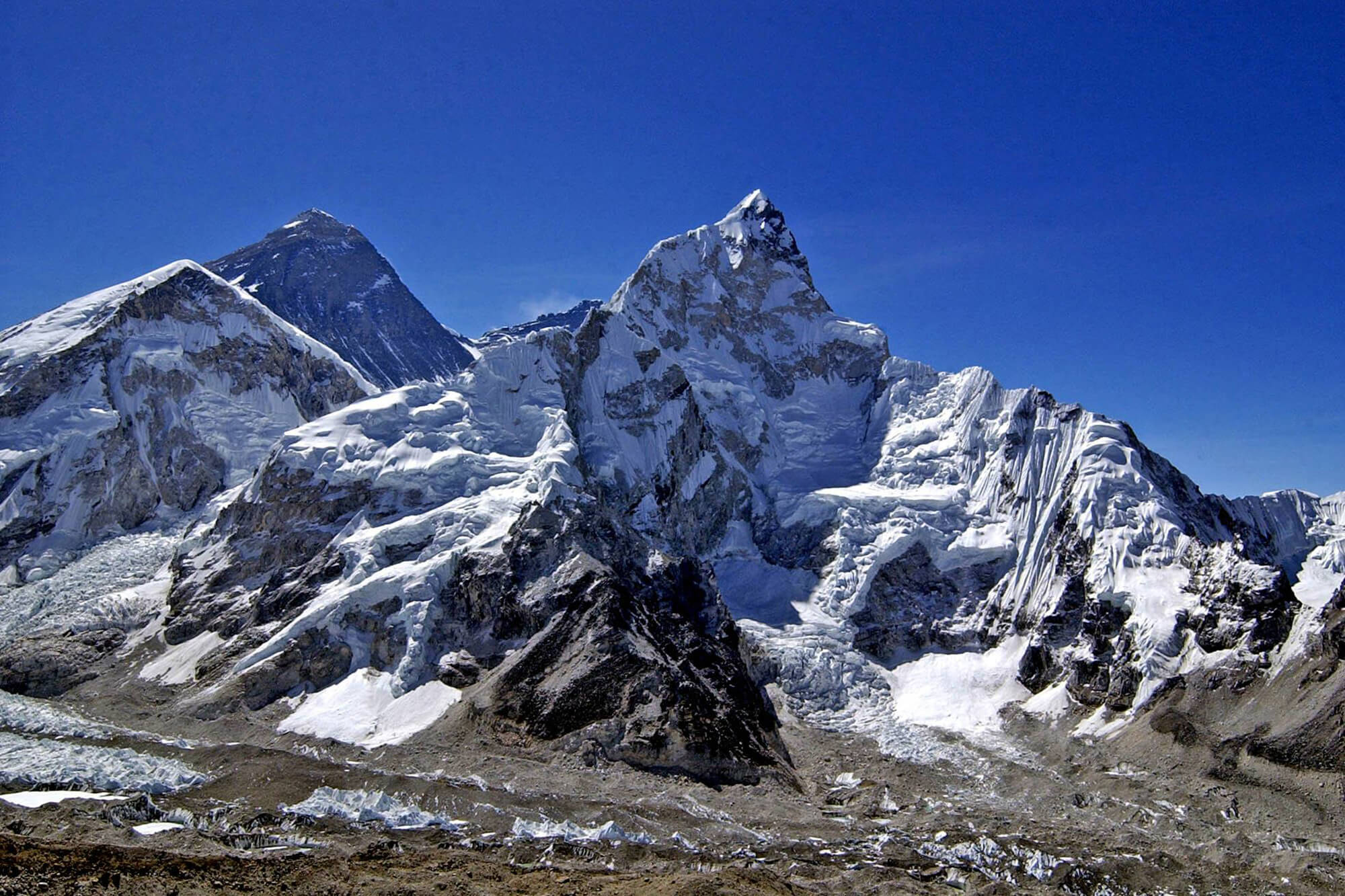 Kalapathhar
KalapathharFinally, this is our date with Everest, the climax of the trek. We start after an early breakfast without a hurry. Crossing through the wide sandy bed of the dried-up lake and steep zigzags we ascend about 100m to have the great view of Lingtren, Khumbutse, and Changtse. As the climb begins again, we get a grand view of the Khumbu glacier and Nuptse massif and finally we climb to the rocky viewpoint of Kala Patthar. It’s a slow tough climb but every meter ascended is rewarded by a bit more of Everest and finally, we find ourselves sitting on the Kala Patthar rocks in the middle of an unbelievable Himalayan Panorama. Now we return downhill which takes much less time. Retracing the way we came up we pass through Gorak Shep, Lobuche, and from Dughla, instead of moving towards Dingboche, we descend to Pheriche making our way along Khumbu Khola, for the night stay while being back.
 Namche Bazaar
Namche BazaarFrom Pheriche, the trail descends to Tsuro Wog after crossing the bridge across Khumbu Khola and great mountain views. From Tsuro Wog we again start the descending path retracing the way we came up proceeding through Orsho, Shomare, and upper Pangboche and finally to a most beautiful place of Tengboche. The Tengboche monastery is Khumbu’s largest gompa. From Tengboche, we move towards Phunki Tenga and now descend to Sanasa and Kyangjuma and then finally to Namche Bazar.
 Lukla
LuklaOur final day’s trekking follows the Dudh Kosi down to Lukla retracing the way we came up.
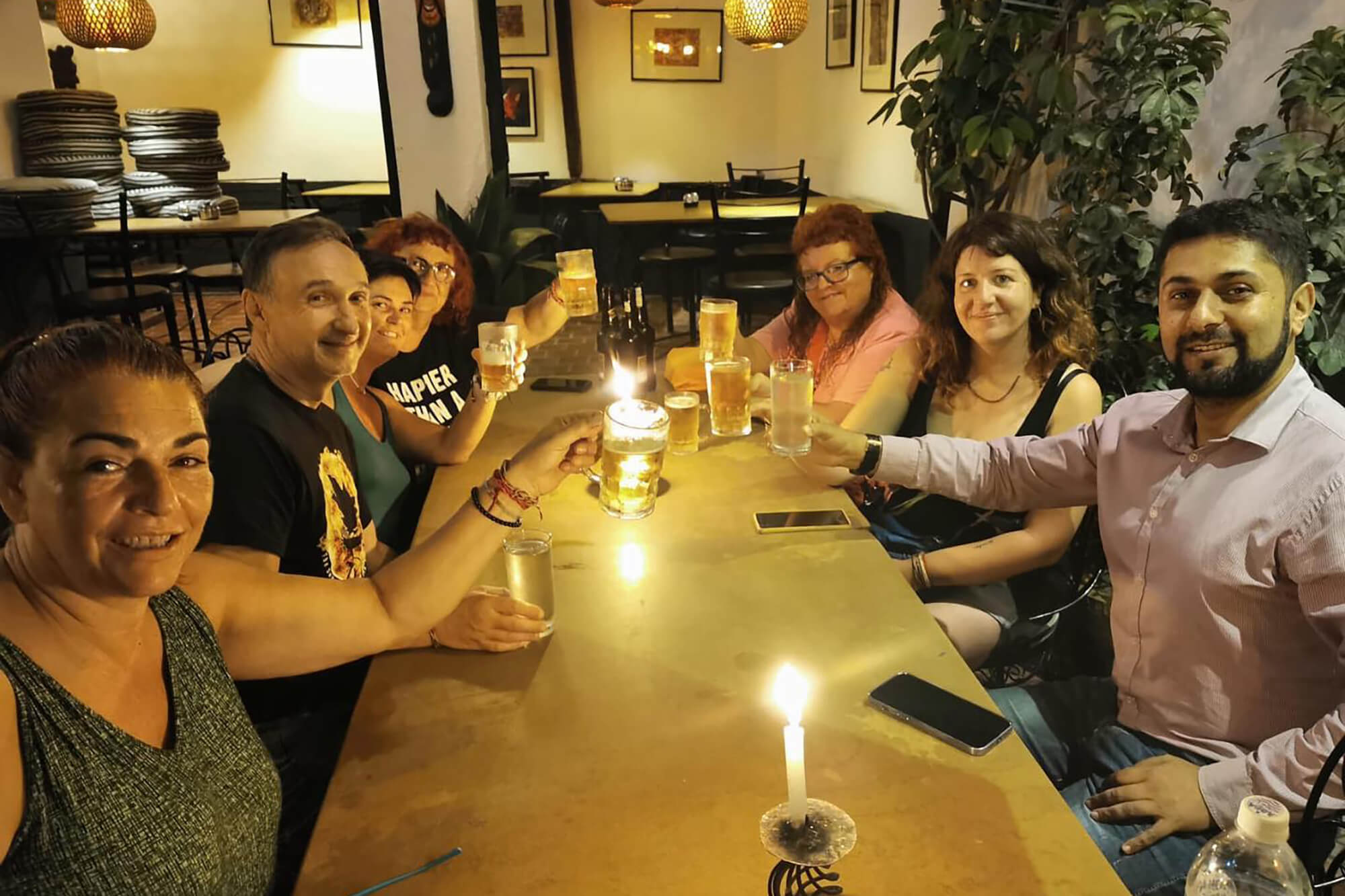 Dinner with guest
Dinner with guestFlyback from Lukla to Kathmandu and drop at the hotel. This is a leisure day which can be utilized by buying gifts and souvenirs for your friends and family. In the evening you will be invited to join FAREWELL reviewing great photos and share experiences of the trip.
 Kathmandu Tribhuwan International Airport (TIA)
Kathmandu Tribhuwan International Airport (TIA)If you prefer to stay longer, you can consult us for short tours such as game drive at National parks, rafting, mountain biking, Tibet, India or Bhutan tours etc. Meals: Breakfast

